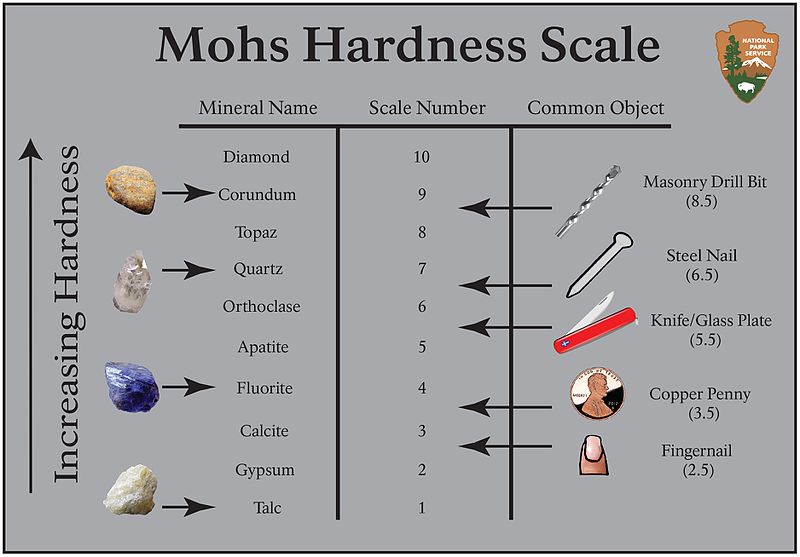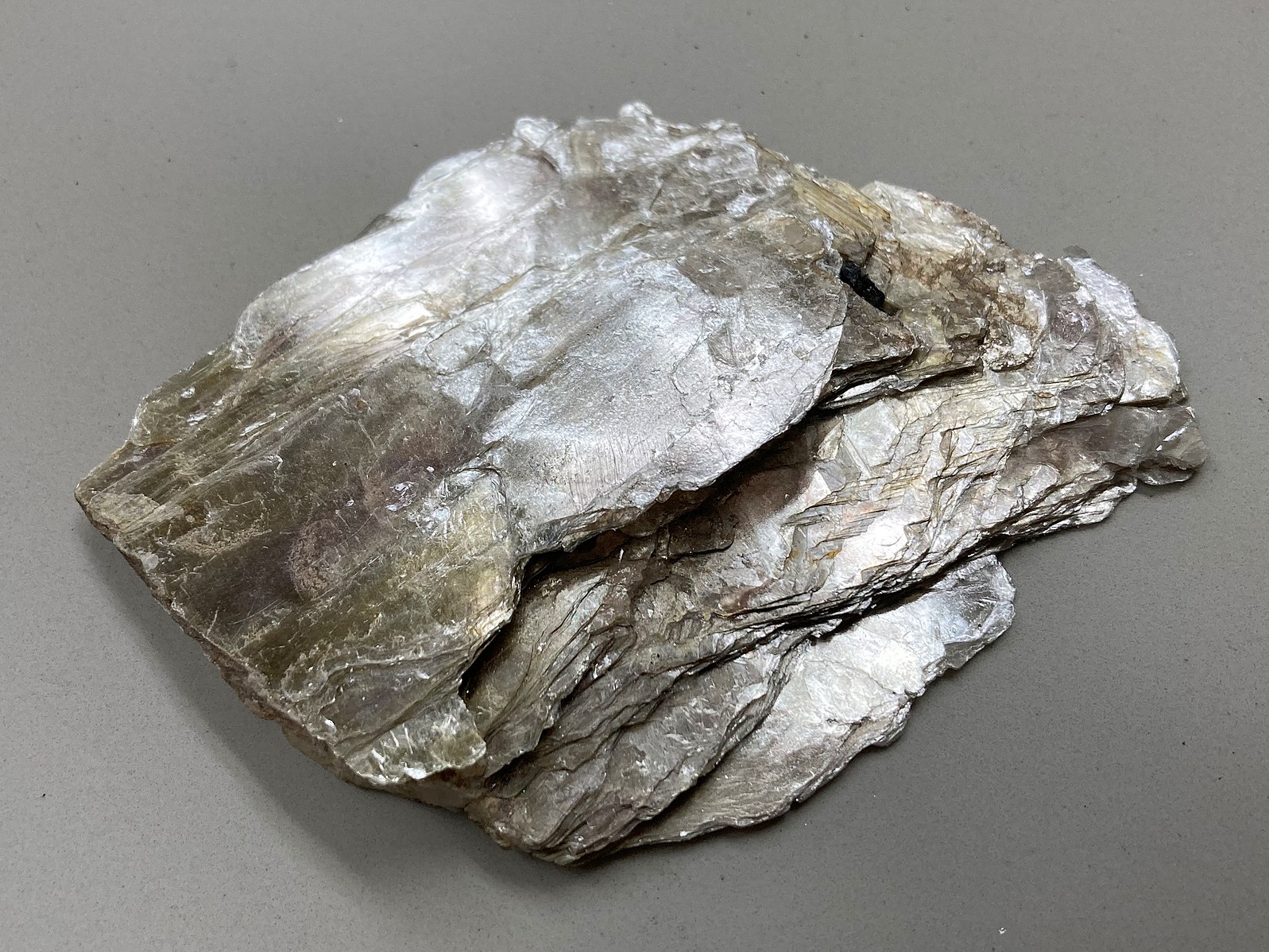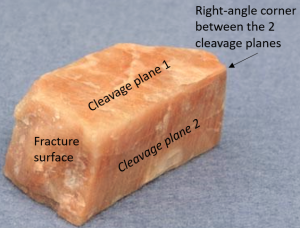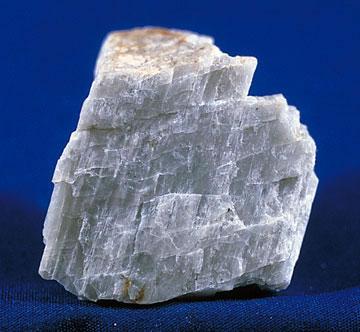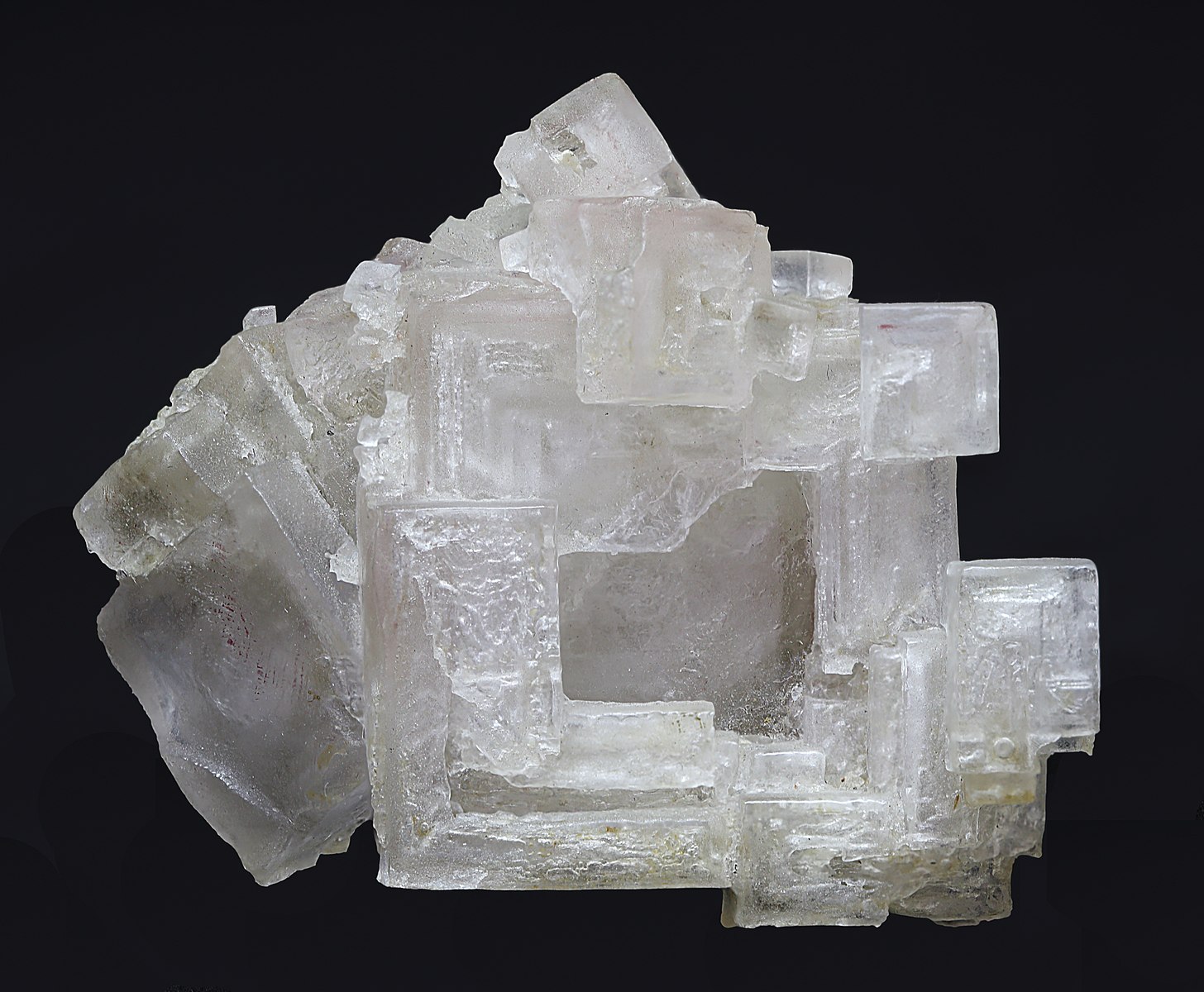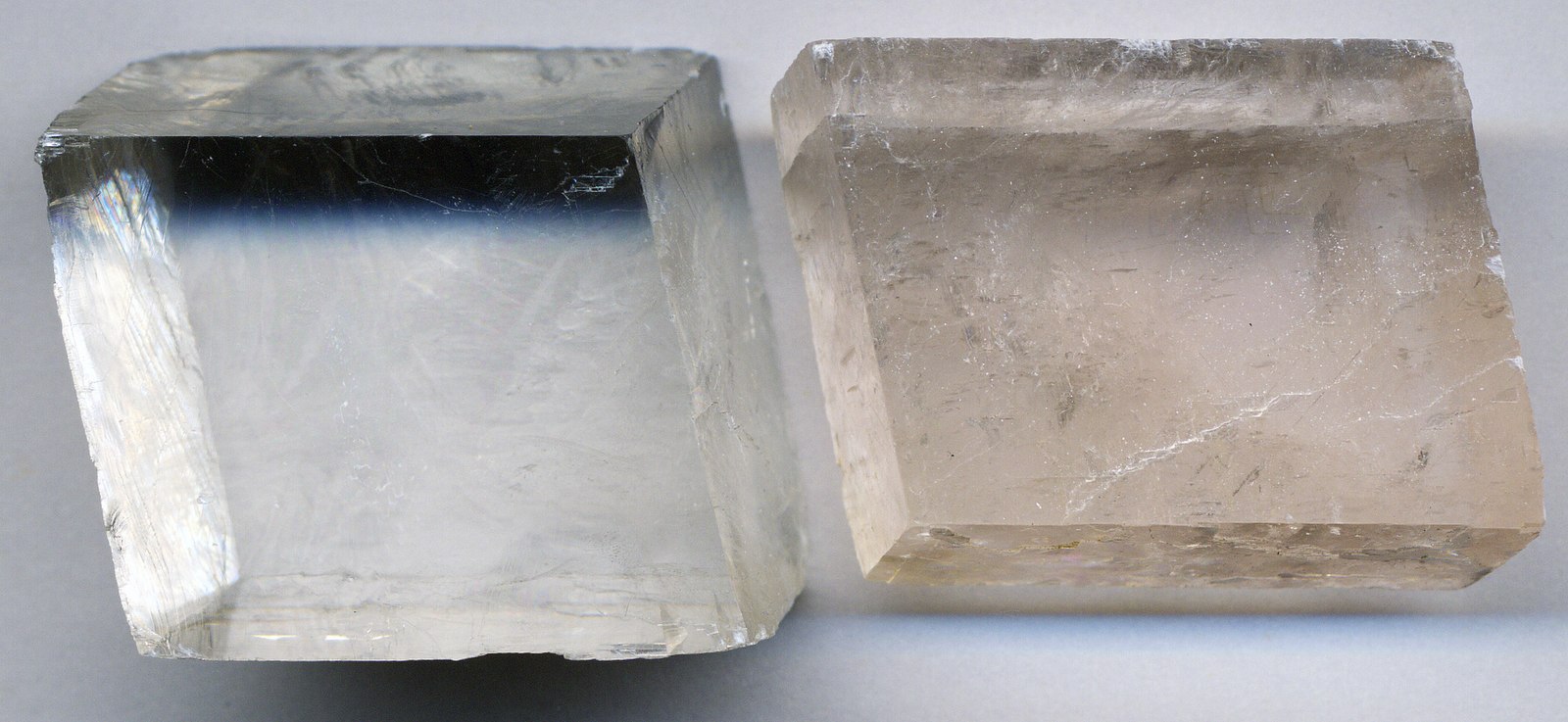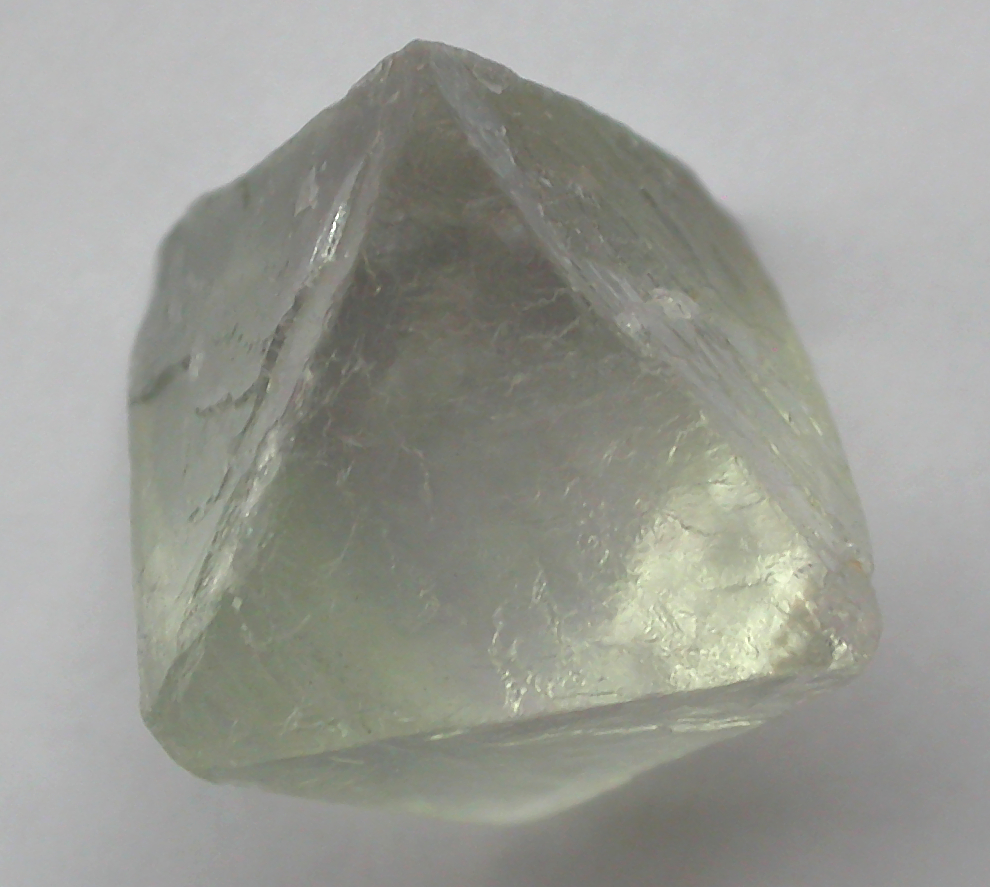3.4 Mineral Hardness, Cleavage, and Fracture
Cleavage and Fracture
What does a mineral look like when it is broken? Cleavage and fracture describe the appearance of a mineral when a crystal is broken from an external force such as physical weathering or when you strike it with a hammer. Cleavage is the tendency for crystals to break along planar surfaces that are parallel to atomic planes. Nonetheless, some minerals do not break along smooth planes at all! Such a tendency for a mineral to break unevenly is called fracture. Take a look at the two images below. Can you tell the difference between Cleavage and Fracture?
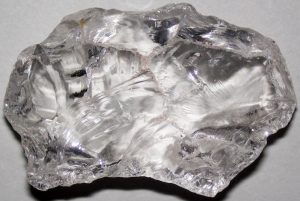

Let’s investigate these properties in a little more detail! Watch the video below for a summary of how mineralogists generally classify cleavage.
In summary, the number of non-parallel cleavage planes that can be observed is an identifying characteristic of the mineral. It is typical to observe the following types of cleavage as shown in the table below. [1]
We will now review what we have seen of cleavage and fracture by examining some common mineral samples!



Hardness
Mineral hardness is the mineral’s resistance to being scratched. The hardness of the mineral can be defined by a numerical scale, called the Mohs Hardness Scale which goes from 0 to 10. You can test the hardness of a mineral using everyday objects like a penny, fingernail, nail, glass, or file to find out where on the hardness scale the mineral lies.
https://youtube.com/clip/UgkxoXw2Q9GVzb4r1wM2BvZ5R4Fa8s70eUID
If you can scratch the mineral with the object, then the object is harder than the mineral. If the mineral can scratch the object, then the mineral is harder than the object. You can also use other minerals to assign a hardness number to a mineral. In other words, we assign a hardness number to a mineral by making relative observations!
Here is the hardness scale and some objects and minerals that fall along with it for reference:
